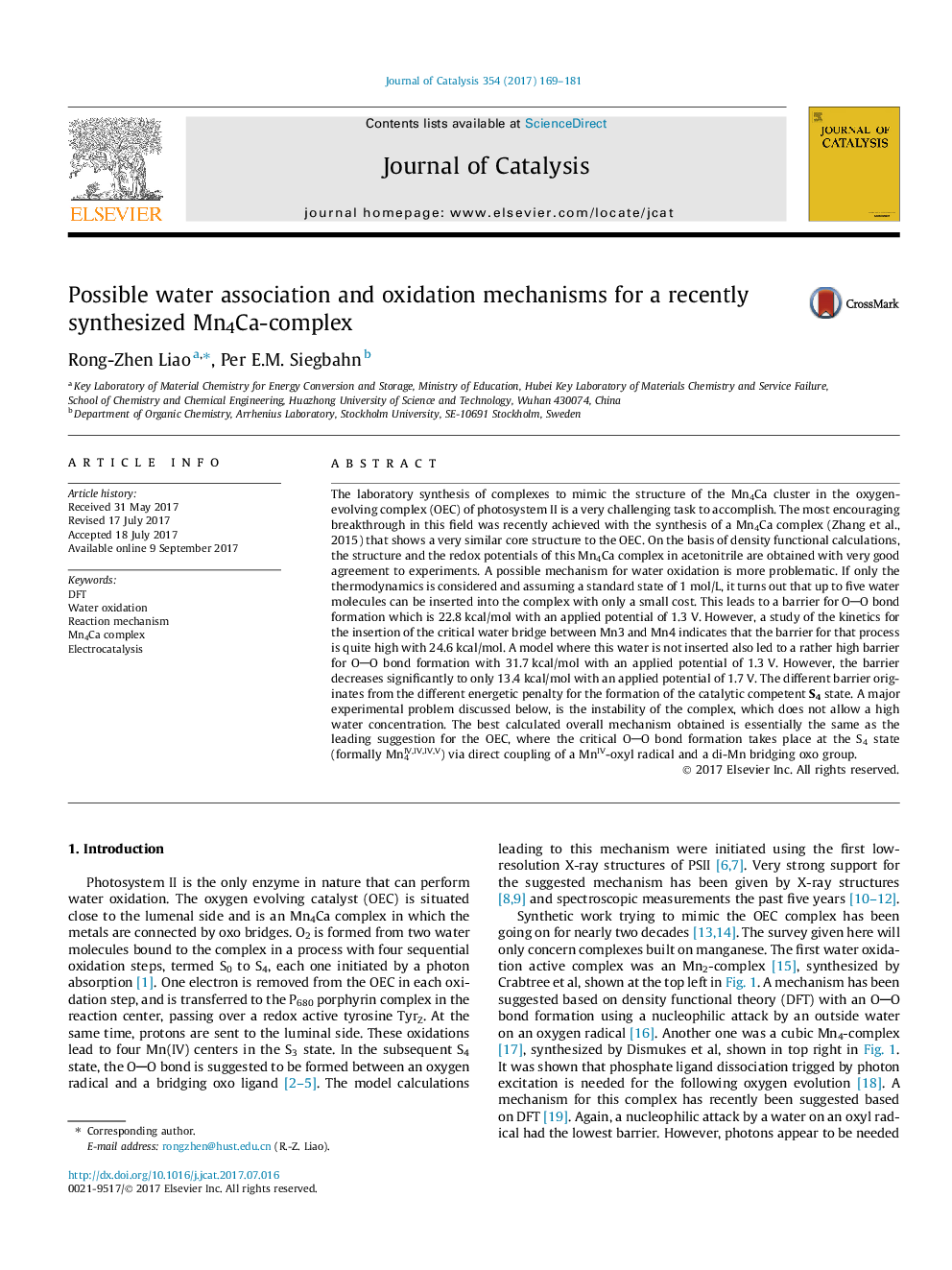| کد مقاله | کد نشریه | سال انتشار | مقاله انگلیسی | نسخه تمام متن |
|---|---|---|---|---|
| 6455509 | 1419755 | 2017 | 13 صفحه PDF | دانلود رایگان |

- The energetics for a recently synthesized Mn4Ca-complex is studied.
- Excellent agreement is found for calculated redox potentials with experiments.
- Water insertion is important for efficient oxygen evolution.
- An OO bond formation mechanism is found to be very similar to that for OEC.
The laboratory synthesis of complexes to mimic the structure of the Mn4Ca cluster in the oxygen-evolving complex (OEC) of photosystem II is a very challenging task to accomplish. The most encouraging breakthrough in this field was recently achieved with the synthesis of a Mn4Ca complex (Zhang et al., 2015) that shows a very similar core structure to the OEC. On the basis of density functional calculations, the structure and the redox potentials of this Mn4Ca complex in acetonitrile are obtained with very good agreement to experiments. A possible mechanism for water oxidation is more problematic. If only the thermodynamics is considered and assuming a standard state of 1Â mol/L, it turns out that up to five water molecules can be inserted into the complex with only a small cost. This leads to a barrier for OO bond formation which is 22.8Â kcal/mol with an applied potential of 1.3Â V. However, a study of the kinetics for the insertion of the critical water bridge between Mn3 and Mn4 indicates that the barrier for that process is quite high with 24.6Â kcal/mol. A model where this water is not inserted also led to a rather high barrier for OO bond formation with 31.7Â kcal/mol with an applied potential of 1.3Â V. However, the barrier decreases significantly to only 13.4Â kcal/mol with an applied potential of 1.7Â V. The different barrier originates from the different energetic penalty for the formation of the catalytic competent S4 state. A major experimental problem discussed below, is the instability of the complex, which does not allow a high water concentration. The best calculated overall mechanism obtained is essentially the same as the leading suggestion for the OEC, where the critical OO bond formation takes place at the S4 state (formally Mn4IV,IV,IV,V) via direct coupling of a MnIV-oxyl radical and a di-Mn bridging oxo group.
DFT calculations are used to elucidate the OO bond formation mechanism for a recently synthesized Mn4Ca-complex.25
Journal: Journal of Catalysis - Volume 354, October 2017, Pages 169-181